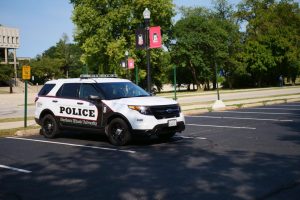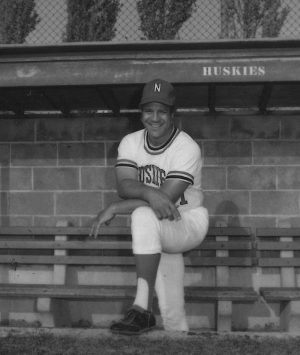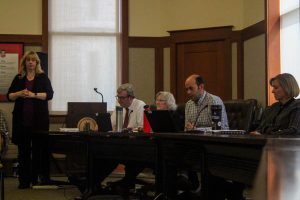Exhibit portrays Chinese uprising
September 13, 1989
The pictures speak for themselves.
Shouting students, smiling yet tense government officials, tanks, soldiers, bodies … these images of pro-democratic events in China are being displayed on campus to honor the Chinese students who gave their lives in pursuit of democracy.
“We tried to be neutral,” said King Siu, one of the organizers of the “Hundredth Day After the June 4 Tiananmen Massacre” exhibit. The pictures represent both government and student perspectives.
The exhibit was organized by the Hong Kong Student Concern Group and funded by the Student Association.
A videotape of the massacre and panels featuring about 100 pictures of the pro-democracy events will be displayed in the Diversions Lounge in the Holmes Student Center from 9 a.m. to 6 p.m. on Wednesday and 9 a.m. to noon on Thursday.
One onlooker at the exhibit had been at Tiananmen Square during the pro-democracy events. Graduate physics major Yong Yan said he attended several of the demonstrations in the square, but he was not there the night of the massacre.
Yan said many of his classmates were arrested and some were shot, but lived.
“Classmates of my girlfriend were shot dead. Many of my classmates went to the Tiananmen Square that night, their clothes were soaked in blood. They tried to carry the bodies.”
Yan said he did not think the students’ activities would resume unless a major event occurred in China, such as the death of government leader Deng Xiaoping. “They do not dare to do such things,” he said.
A panel discussion entitled “The June 4 Massacre: The Implications of the Notions of a Democratic China” will take place tonight at 7 p.m. in the student center’s Sandburg Auditorium.
Panelists will include sociology faculty members Kevin Anderson and Richard Quinney and political science faculty member Brantly Womack. Graduate students Hu Yao Di and Dan Wallen also will be on the panel.
The pro-democracy movement began April 15, when Hu Yaobang, former general-secretary of the Guiding Party, died of a heart attack. Hu was forced to resign in 1987 because he sympathized with Chinese students, said King.
“The global culture has already been injected into the Chinese culture,” King said. He explained that the global culture typically means Western culture. “I think this is what they want, without a very firm or basic understanding of it,” King said.
“I think democracy might not be very compatible with the Chinese culture to a certain extent … The Chinese spirit is somewhat different than the Western spirit,” said King.
The day after a hunger strike, numerous demonstrations and peaceful sit-ins, events in Beijing culminated in the Tiananmen Square massacre on the evening of June 3.
Many Chinese and Hong Kong students in America are afraid to speak out about the events for fear of reprisals on their families or themselves if they return to China, said Sueh-Lin Cheng, a graduate NIU accounting major who saw the video display.
“It’s shocking to see the Chinese do this to their own people,” said one observer while looking at pictures of mutilated corpses.
On June 7, the Chinese government denied gunfire or deaths at Tiananmen Square.
The NIU exhibit does not state how many people died in the Tiananmen Square massacre because no official count is known, said Chris Lau, a senior computer science major. “The numbers can’t be confirmed,” Lau said. The government said only 23 people were killed in the episode.






